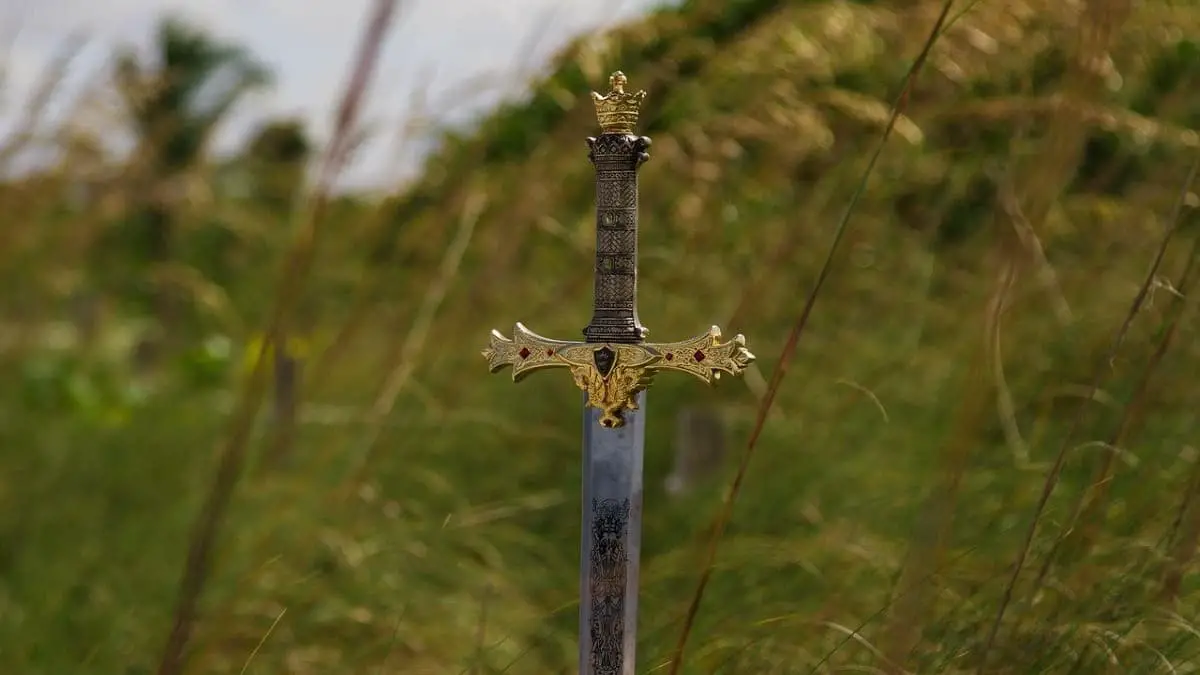If you use a jigsaw often, you probably asked this question: Can I use a T-Shank blade in a U-Shank jigsaw? And if you’re a woodworker or even hobbyist, you want to make sure your jigsaw is working properly and safely.
I was looking for U-shank jigsaw blades recently. However, my local store didn’t have any in stock.
So, do you need to worry about using T-shank blades in U-shank jigsaws?
Most modern jigsaws use T-shank blades. Many accept both T-Shank and U-Shank blades. Some older jigsaws accept only U-shank blades. To tell what your model accepts, check the manufacturer instructions.
Still have questions about this? Do you need to buy the older U-shank blades? Do you need to buy a new jigsaw? Let’s look into this situation further …
Note: Some of the links below can be affiliate links. For more information, see the disclosure page.
Table of Contents
- What is the difference between T-shank and U-shank blades?
- What is a U-shank jigsaw?
- Is it safe to use T-shank blades in a U-shank Jigsaw?
- Summary
What is the difference between T-shank and U-shank blades?
Currently, there are two basic types of blades for the jigsaw: T-shank and U-shank. How do these two types differ?
T-Shank Blade
T-shank blades contain lateral T-shaped projections near the top of the blade. These fit into the jigsaw blade clamp mechanism. Normally, a quick release lever allows you to change blades without an external tool, such as an Allen wrench, hex wrench, or screwdriver. See T-shank blades on Amazon.
The quick change system is a very convenient feature. As you know, jigsaw blades are sharp, so you want to avoid “tugging” blades to remove them from the saw. Shop gloves or a cloth can help you avoid finger cuts if you need to do this!
It’s also convenient in another way: Jigsaw blades can get very hot. This is due to friction as the blade moves up and down while cutting through the material. So, shop gloves or a cloth can also help with this problem..
This mechanism saves a great deal of time and makes woodworking much more enjoyable. I recall when I needed to search for an Allen wrench in order to change a jigsaw blade. I looked all over the garage and spent a considerable amount of time. This was a very frustrating experience.
This video shows the Bosch JS260 Jigsaw. It has a toolless T-shank blade insertion system. Also, you can eject the blade by moving a lever. Note: Be sure to unplug the saw before removing the blade. This is a good safety precaution.
See the Bosch JS260 Jigsaw on Amazon.
U-Shank Blade
Older jigsaws use these blades, and they are not as popular as T-shank blades. They are missing the little projections at the end. Sometimes, there is a U-shaped “curve” on the top of the blade. This link to Amazon shows what U-shank blades look like.
It’s easier to remove T-shank blades than U-shank blades. Possibly, this is the reason why they’re so popular. Here are the steps to remove a U-shank blade:
- Unplug the power cord – You certainly don’t want the blade to move while you’re changing it since your fingers will be close to it! Also, it’s possible for the blade to be “thrown off”. This can happen if the blade clamp is loose while the saw is in operation. If your Jigsaw is a corded model, remove the battery pack.
- Loosen the set screw – This is located on the blade clamp. If it’s covered by other parts of the saw or not accessible, turn the saw on until it moves down so you can get to it. This set screw holds the blade in place tightly. If the screw has a hex head, use something like an Allen wrench. If it has a Phillips head, use a screwdriver.
- Pull out the blade in order to remove it – You may need to wiggle the blade a bit in order to free it before you can pull it out. You need to be careful when doing this: The blade is very sharp. Make sure it doesn’t cut your fingers! Gloves or a cloth can offer some protection. Also, the blade can be very hot after cutting through wood.
Here are the steps to install a U-shank Blade:
- Make sure that the saw is still unplugged – There’s no guarantee that the saw is still unplugged (even though it was unplugged before). You can’t assume that no one else got to it! I know this might seem like a waste of your time. However, it’s also wise to err on the side of caution when using power tools! If you have a cordless saw, make sure that the battery pack has been removed.
- Slide the blade into the blade clamp – Make sure that the teeth are facing forward and the back of the blade is seated in the blade roller guide. Also, make sure that it is pushed in all the way. You want it to be held securely when the set screw is tightened.
- Tighten the set screw – You probably need an Allen wrench or screwdriver to do this. Make sure that the blade is not loose. Loosen the set screw and push it in further, if needed. Then, re-tighten.
- When you’re ready to cut again, plug in the saw – Make sure you observe the other safety precautions. They include: Wear goggles or safety glasses. This is because scraps of wood can be thrown towards the eye. Also, the hot blade can break. Wear “hearing protection” (earmuffs and/or earplugs) because the jigsaw is quite noisy.
To summarize, T-shank blades are the current standard and most modern jigsaws use them. It’s simple and quick to change T-shank blades. U-shank blades were used by older jigsaws. However, many jigsaws accept both types. Nevertheless, many modern ones don’t.
What is a U-shank jigsaw?
A U-shank jigsaw is a jigsaw made to accept U-shank blades. It seems like this statement is very clear and there should be no confusion. However, things are not as simple as they seem.
Many modern jigsaws accept both T and U-shank blades. This fact is mentioned in the manufacturer’s instructions. So, should they be considered U-shank jig saws?
Maybe not. These saws were produced when manufacturers knew all about the T-shank standard and an effort was made to make them compatible with older models.
So, it seems reasonable to define a U-shank jigsaw as one of the older models that only accepts U-shank blades.
OK, older jigsaws used U-shank blades. Why are we now using T-shank blades? When did this shift take place?
These questions are relevant because they deal with the subject of this article. I was curious and did a little research. Here’s what I found:
Bosch invented the old double-tang jigsaw blades. They also created the T-shank style blade that replaced it; it’s now the industry standard blade type. Bosch introduced bi-metal jigsaw blades back in 1981 and the first tool-less blade changing system a few years later (it’s still used on their 1584 and 1587 series saws). They’ve enhanced the blade-changing process further with the “One-Touch” system that ejects hot blades automatically so you don’t have to risk burning your fingers.
– Woodworkers Journal
So, suppose you’re using a saw dating back to the 1980s or so. This is quite possible if you “inherited” a saw from another woodworker. Then, you can be pretty sure that it accepts only U-shank blades. If you’re not sure, you may need to check the manufacturer’s directions. If you no longer have them, you might be able to find them online. Or, you can talk to the manufacturer.

Is it safe to use T-shank blades in a U-shank Jigsaw?
Suppose you need to use an older jigsaw. You’ve obtained it from a person who did woodworking at an earlier time. The saw is very powerful. It’s really nice and has all sorts of features such as variable speed control.
You can’t find any U-shank blades in a local hardware store. However, you don’t want to go through the hassle of ordering them online. With an online order, you’d have to wait for delivery and you’re eager to start right away. Is it safe to use T-shank blades?
I’m not really sure. Ultimately, you need to rely on instructions from the original manufacturer to answer that question.
For more information, see another article I wrote called: What is a Jigsaw?
However, you should keep this in mind: They didn’t know about T-shank blades at the time the saw was made. That is, it was not designed for T-shaped blades.
I think it’s very important for the blade to be fastened to the saw tightly and be totally secure. If there’s any question about that, I would opt to err on the side of caution and not use it with a T-shank blade.
After all, the blade is sharp, moves fast, and gets very hot. I would hate to see it work its way out of the clamp and fly toward me! What’s more, it can break apart into pieces! See another post about tool safety.
Summary
We’ve seen that there are two major types of Jigsaw blades, T-shank and U-shank. T-shank is the modern standard and most saws accept T-shank. T-shank blades are easier to use and do not require an external tool for blade replacement. Some modern saws will accept both T-shank and U-shank. However, some older saws only use U-shank blades.
Let’s say the saw is an older model, was made to use U-shank blades, and the manufacturer has not stated that it can use T-shank blades. Then, I would err on the side of caution and not use T-shank blades in the saw.
Did you enjoy this post? If so, please share. Also, don’t forget to follow my boards on Pinterest.
Related Posts:
15 Common Mistakes When Cutting Plywood With A Jigsaw
Do Jigsaw Blades Come In Different Lengths?
How To Use A Jigsaw To Cut A Hole
Jigsaw vs Router: 15 Pros And Cons
Can You Burn Plywood?
Can You Burn Stained Wood?


